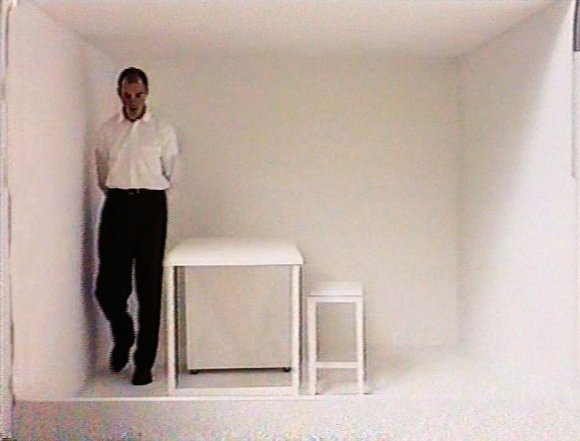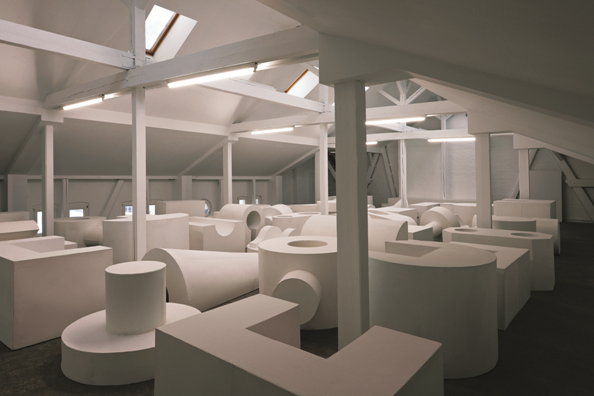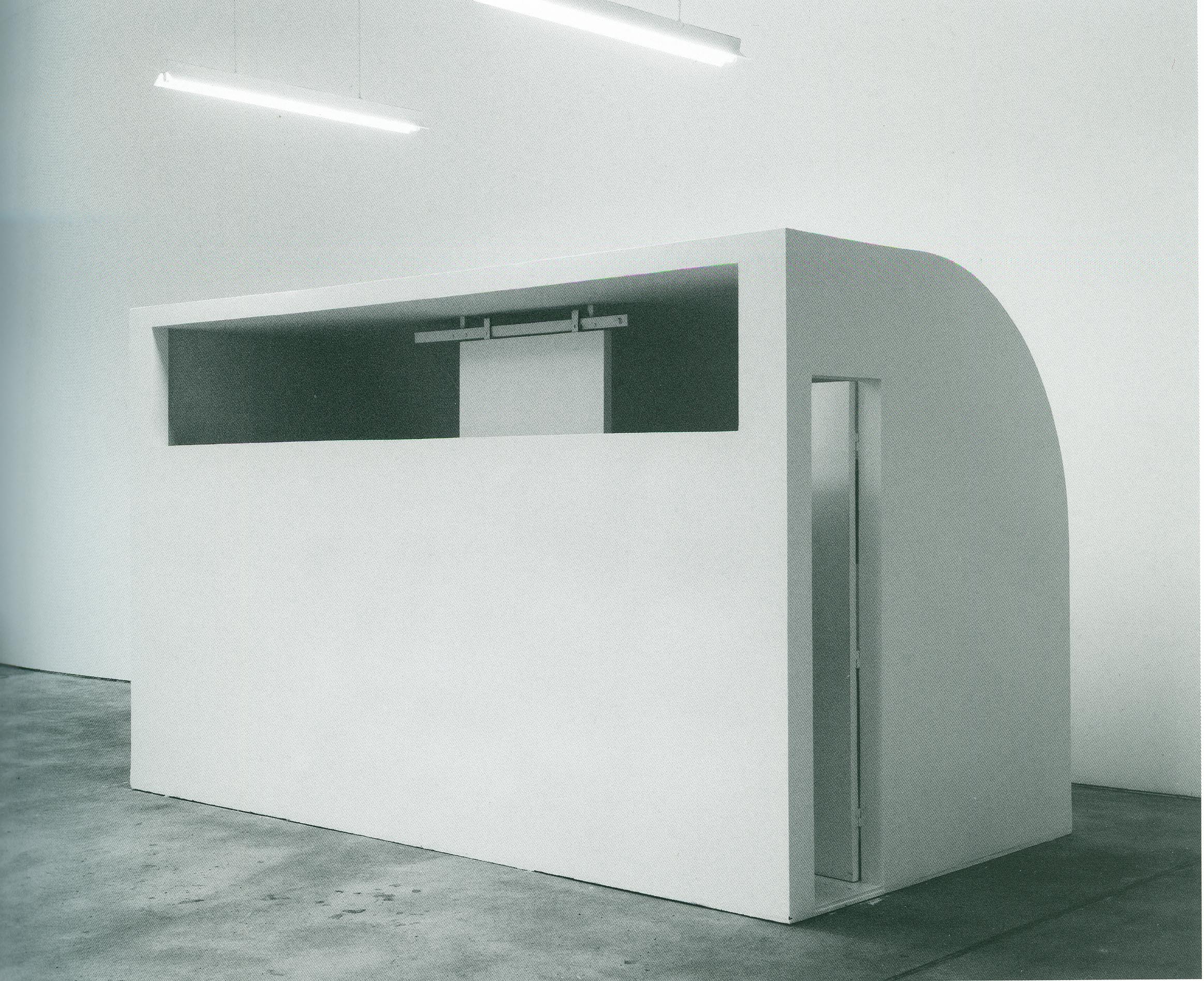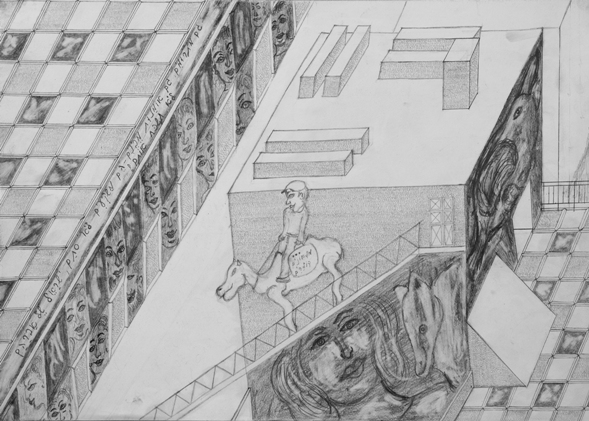
Absalon, the Israeli–born sculptor Meir Eshel died in Paris in 1993 at the age of 29. But not before his remarkable 1:1 architectural models of idealized living units, made from wood or cardboard and painted white, had achieved international recognition
Several exhibitions of his work have been held in Europe in recent years, curated, like the one just opened in Tel Aviv, by Susanne Pfeffer, a curator at Berlin’s KW for Contemporary Art. In a sense, with this show, Absalon has come home, since all-white constructions are a familiar sight in Tel Aviv which became known as the White City due to the hundreds of Bauhaus-style buildings built there in the 1930s. But the question arises, do the living spaces that Absalon designed some 20 years ago, with their links to the Russian Constructivist movement and to pioneers of modern architecture like Le Corbusier, have any relevance today, aside from being of historical interest?
Here is a brief run-down of the exhibits.
Many of the pieces on show are loaned from Museums abroad. They include three videos, one of which Solutions (1992) sited at the entrance to the exhibition, provides an introduction or key to all Absalon’s work. He is shown in an isolated white room furnished in the barest fashion with a bench, a table, a bath and a plank for sleeping on. The impression given is of a space and its contents exactly tailored to his body, its movements and needs, whether sitting, eating, washing or sleeping – or just meditating.

Absalon’s fascination with ways that objects (not humans) relate to, or fill a space, is illustrated on the lower of the three floors of the Museum. Laid out here, as a cohesive group, is a 40 piece collection of large wood and cardboard shapes (all painted white). Each piece is different, but all are derived from basic geometric forms. Shapes like these form the basic units for a number of austere dwellings – he calls them Proposals for Habitats– that are featured at entrance level. Some of these ‘homes’ consist of one-room cabins where a funnel-like opening connected to a pipe leads to an inner sanctum.

Before he died Absalon had almost completed a series of six Cells, protective shelters from the outside world, in which he envisaged living whilst travelling between the capitals of the world. All are on display here, each having slightly different features. The interior of the one intended for Paris (Cell 1) has comparatively spacious living facilities; Cell 5, destined for his residence in Frankfurt (Germany) is in the form of a fortified tower, while the structure designed for Tel Aviv (Cell 4) has a slit window that gives protection from the sun while flooding the interior space with light.
Within our own environment, these spare habitations may make one think of bomb shelters, military dug-outs or even mausoleums. But for Absalon, they were symbols of social protest, valid today as they were during his lifetime. Symbols of protest against the noise, bustle and complexity of everyday life that threaten to destroy a man’s ability to be alone with himself.

At the entrance counter of the Helena Rubinstein pavilion sits Valery Bikovsky (b.Siberia 1942) who has been a guard at the Tel Aviv Museum for more than 20 years. At work, when he is not busy, Bikovsky draws and paints on the back of Museum posters with leftover materials from the Museum’s Educational Department. Mostly, he produces schematic portraits of the Museum staff, or of the artists, technicians or workmen who come to this venue.
Bikovsky has recently a good deal of publicity, following the inclusion of his work in the Haifa Museum’s current exhibition of Outsider Art. One whimsical scene, on exhibit there, (whose significance I did not understand prior to talking with him) – depicts Tel Aviv Museum’s former director, the late Moti Omer riding a camel with a saddle bag packed with donations for the new wing of Tel Aviv Museum. On the wall opposite his figure, Bikovsky has painted portraits of some of the donors.
Helena Rubinstein Pavilion of the Tel Aviv Museum, 6 Tarsat Boulevard, Tel Aviv





